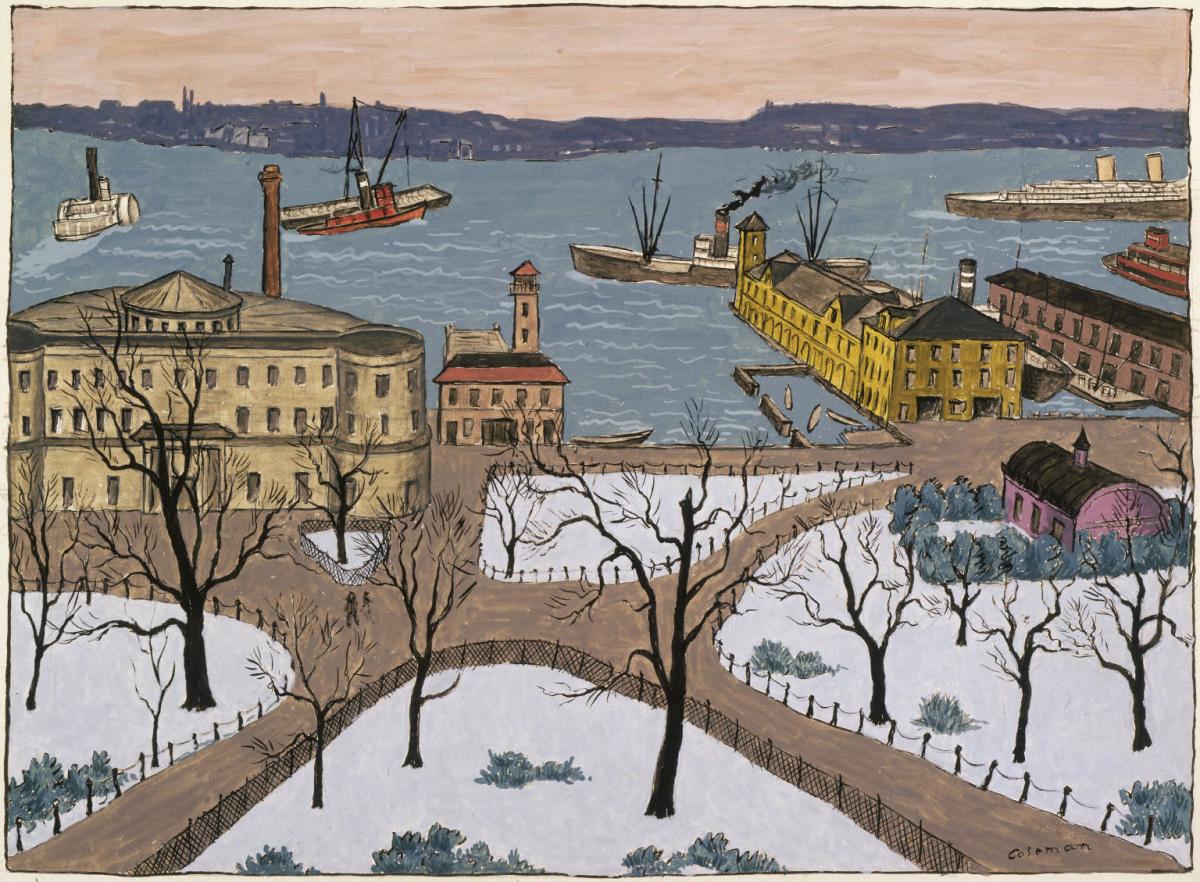Battery Park
Glenn O. Coleman ( not dated )

Glenn O. Coleman’s fascination with New York City’s architecture was rooted in his need to document the evolving urban landscape. Coleman arrived in the city from Indianapolis in 1905, at a time of great change. His near compulsive interest in depicting the city from new perspectives was an act of preservation. Coleman describes “the personality” of buildings as “the new generation of skyscrapers hover[ing] over the older streets, detached, abstract, a little respectful.”[1]
Battery Park, purchased from the Downtown Gallery in 1930, was the first of nine pieces by Coleman that Duncan Phillips collected. Phillips was interested in Coleman for his unique use of perspectives and his skill as a colorist.[2] A 1929 article in The Art News described Coleman’s approach to architecture as being “more concerned with the Spirit of the subject than with its outward aspects.”[3] For example, Castle Garden, the large semicircular building on the left side of the composition, was red brick, yet Coleman chose to render it beige. The yellow and pink buildings are also impressionistic choices. Coleman’s color selection and the decision to allow space between subjects allows each object in the composition to be contemplated individually. At the time, Castle Garden was an aquarium, but it had previously operated as America’s first immigrant-processing center. In 1932, Battery Park returned to New York and was included in the Whitney Museum of American Art’s Glenn O. Coleman Memorial Exhibition, which honored the artist five months after his death.[4]
Rebecca Shipman as part of the Seeing U.S. Research Project
[1] Glenn O. Coleman, “The Downtown Gallery,” 1930, exhibition brochure. Phillips Collection Archives.
[2] Duncan Phillips, letter to Mrs. Halpert, December 15, 1929. Phillips Collection Archives.
[3] Glenn O. Coleman, “Ferargil Galleries,” The Art News, 1929. Phillips Collection Archives.
[4] New York Times, October 18,1932.